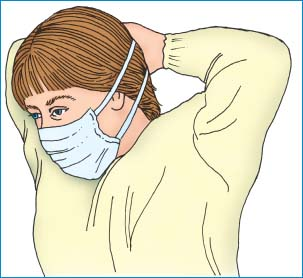Personal Protective Equipment
Isolation procedures may be implemented to prevent the spread of infection from patient to patient, from patients to health care workers, or from health care workers to patients. Central to the success of these procedures is the selection of the proper personal protective equipment and adequate training of those who use it.
Equipment
Materials for Isolation
Personal protective equipment ▪ isolation cart or anteroom for storing equipment ▪ door card or sign alerting staff members and others entering the room that isolation precautions are in effect.
Personal Protective Equipment
Fluid-resistant gowns ▪ gloves ▪ goggles or face shield ▪ masks or respirators.
Each staff member must be trained in the proper use of personal protective equipment.
Preparation of Equipment
Remove the cover from the isolation cart if necessary, and set up the work area. Check the cart or anteroom to make sure an adequate amount of the proper isolation supplies are available for the designated isolation category.
Putting on A Face Mask
To avoid spreading airborne particles, wear a face mask. Position the mask to cover your nose and mouth, and secure it high enough to ensure stability. Tie the top strings at the back of your head above the ears. Then tie the bottom strings at the base of your neck.3
 |
Adjust the metal nose strip if the mask has one.3
 |
Implementation
Remove your watch (or push it well up on your arm) and your rings, according to facility policy. These actions help to prevent the spread of microorganisms hidden under your watch or rings.

Stay updated, free articles. Join our Telegram channel

Full access? Get Clinical Tree


Get Clinical Tree app for offline access
